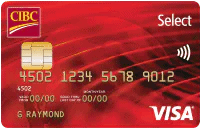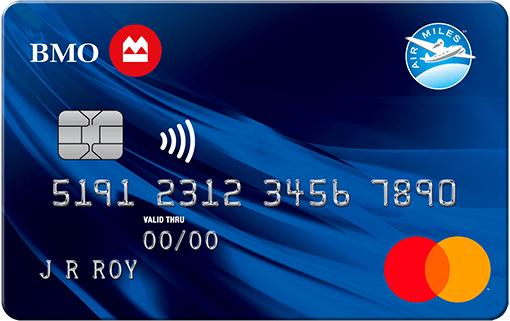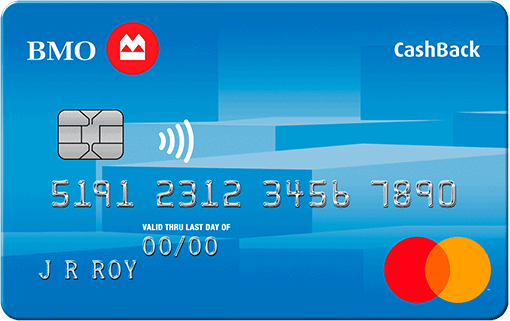On this page
- Our balance transfer top picks
- What is a balance transfer?
- Do balance transfer cards come with any fees
- Can you make purchases with a balance transfer card?
- Does a balance transfer affect your credit score?
- How to pick the right balance transfer card?
- Is a balance transfer card right for you?
The Motley Fool Canada’s top balance transfer credit card picks at a glance:
| Credit card | Balance Transfer Offer |
| CIBC Select Visa Card | 0% interest for 10 months |
| PC Financial World Elite Mastercard | 0.97% interest for 6 months |
| BMO Air Miles Mastercard | 1.99% interest for 9 months |
| Tangerine Money-Back Credit Card | 1.95% interest for 6 months |
| BMO CashBack Mastercard | 1.99% interest for 9 months |
CIBC Select Visa Card
Good for: 0%-interest balance transfers

Balance transfer offer
0% interest for 10 months on balances transferred during the online application (13.99% after that).
1% balance transfer fee.
Rewards / Cashback
None
Annual fee:
$29
Eligibility:
Credit rating: Good
PC Financial World Elite Mastercard
Good for: Low-rate, no-fee balance transfers plus rewards

Balance transfer offer
0.97% interest for 6 months on balances transferred in the first 90 days (22.97% after that).
No balance transfer fee.
Rewards / Cashback
30 PC Optimum points per $1 at President’s Choice grocery stores (like Loblaws, No Frills, and valu-mart)
45 PC Optimum points per $1 at Shoppers Drug Mart
30 PC Optimum points per $1 at Esso, Mobil, and PC Travel
10 PC Optimum points per $1 everywhere else
Annual fee:
$0
Eligibility:
Credit rating: Very good
Minimum income: $80,000 (individual), $150,000 (household)
BMO Air Miles Mastercard
Good for: Low-rate balance transfers plus rewards

Balance transfer offer
1.99% interest for 9 months on balance transfers (22.99% after that).
1% balance transfer fee.
Rewards / Cashback
1 BMO AIR MILE for every $25 spent and 3x miles for spend at participating AIR MILES partners.
Annual fee:
$0
Eligibility:
Credit rating: Good
Tangerine Money-Back Credit Card
Good for: Low-rate balance transfers and cashback

Balance transfer offer
1.95% interest for 6 months on balances transferred within the first 30 days (19.95% after that).
1% balance transfer fee.
Rewards / Cashback
2% Money-Back Rewards in two categories of choice
0.5% Money-Back Rewards on everything else
Annual fee:
$0
Eligibility:
Credit rating: Good
Minimum income: $12,000
BMO CashBack Mastercard
Good for: Low-rate balance transfers and cashback

Balance transfer offer
1.99% interest for 9 months on balance transfers (22.99% after that).
1% balance transfer fee.
Rewards / Cashback
3% cashback on groceries, 1% cashback on recurring payments (like streaming services and monthly utilities), 0.5% on all other spending
Annual fee:
$0
Eligibility:
Credit rating: Good
What is a balance transfer?
A balance transfer moves credit card debt from one card to another with the goal of saving money on a lower interest rate. Balance transfers can be an effective way of paying down debt, as the lower interest rate allows you to put more of your money toward the principal.
What is a balance transfer credit card?
Balance transfer credit cards are a special type of card that offers you a low introductory interest rate (occasionally as low as 0%) for a limited time, usually six months to a year. If you have mounds of debt on high-interest cards, you can transfer the balance to these lower interest cards. The idea is that you can pay off your debt faster and owe less overall, since you’ll incur less interest with your lower rate.
Do balance transfer cards come with any fees?
Most of the time, yes, your card will charge a balance transfer fee, usually 1% to 3% of your starting balance. For instance, if you transfer $3,000 to a card with a 1% balance transfer fee, you’d pay $30 in fees and your balance would start at $3,030.
Starting out with more money owed on your account can feel like a big whomp-whomp. But the fee is usually far lower than the money you pay in interest on high-interest credit cards.
Every now and then, you’ll see a credit card with a promotional “no balance transfer fee.” While this can be enticing, you still want to pay attention to the balance transfer card’s APR and introductory period: if the card has no balance transfer fee but a shorter low APR period (like a few months), it might not be worth it to you.
Can you make purchases with a balance transfer credit card?
Yes, you can. It is, after all, a credit card. But perhaps the better question to ask is — should you make purchases with your balance transfer credit card?
While balance transfer cards offer you a low APR on debts transferred to the card, all new purchases will be subject to a different interest rate, not the introductory rate. The standard interest rate will almost surely be significantly higher, and if your goal is to get out of debt quickly, new purchases will only slow you down.
New purchases get a bit more complicated than this. As you make new purchases, your overall balance (both the new balance and the transferred balance) grows. Any payments you make to your balance go toward paying the transferred balance, not the new one. That means, your new purchases will sit longer, potentially accumulating interest and putting you deeper into debt.
Once you pay off your transferred balance, you can start chipping away at the new one, but you’ll continue to pay interest until you zero out your balance.
So, while you can make purchases on balance transfer cards, it’s often wiser not to. Put the balance transfer card in a drawer and don’t take it out until you’ve paid off the transferred balance.
If you want to use a credit card in the meantime to make new purchases (which, for a variety of reasons, can be a good idea), then having a separate card for new purchases may be best. Choosing a rewards credit card for this second card could be a good idea — after all, why not earn points or cashback for your regular spending?
How does a balance transfer work?
To initiate a balance transfer, you’ll most likely have to talk to a customer service representative at your credit card company (some transfers can be started online, but most must be done in person or over the phone). Once you get a hold of someone, you’ll need to provide them with information on your new credit card, as well as on your old one.
Keep in mind that you won’t be able to transfer more than the credit limit on your new card. So if your credit limit is $2,000, and you have $5,000 on your old card, you probably won’t be able to transfer the full balance. Some credit card companies will only allow you to transfer a certain percentage of your credit limit (such as 50% of your total limit), so you’ll want to pay close attention to the balance transfer rules on your card.
After you’ve initiated a balance transfer, it could take a week or so for the balance to appear on your new card. Any longer than two weeks, and you should probably contact your old credit card company to make sure the transfer was initiated.
Don’t forget about your old credit card once you’ve initiated the balance transfer! Until that balance is actually transferred, you’re still on the hook for it. That means that if a payment is due while you’re waiting for the transfer to take place, make at least the minimum payment. It would be a shame to attempt to make a responsible choice with your debt — transferring to a lower interest rate so you can pay it off faster — only to have a missed payment affect your credit and cost you additional fees.
Also, make sure to pay close attention to the terms of your balance transfer card when you’re planning on when to make your transfer. Some balance transfer cards allow you to transfer balances at any time during the promotional period. However, some limit when transfers to take place, for example, only allowing transfers within a 30-day window, or even requiring that balance transfers are initiated when the card is taken out.
Can you transfer a balance between cards from the same bank?
This is almost always a “no”. You can typically only transfer balances between cards from different financial institutions.
Does a balance transfer affect your credit score?
After applying for a balance transfer card, you may see a temporary reduction in your credit score. That’s typically because your credit card company will run a hard inquiry on your credit score after you apply, which can briefly bring your score down a few points.
But that shouldn’t stop you from applying. In fact, if used right, balance transfer cards can help you improve your credit score over the long-run, as the lower interest rate allows you to pay down more debt. The more debt you pay off, the more you reduce your credit utilization ratio (that is, the amount you owe relative to your total credit limit). This ratio has a big impact on your credit score, and the lower it is, the higher (in theory) your credit.
How to pick the right balance transfer card
1. Compare introductory periods
The main point of getting a balance transfer card is to take advantage of the low introductory APR period. So, before anything else, look for a card with the most advantageous offer. Check both the length of the introductory period, as well as the the intro APR rate.
2. Check for balance transfer fees
A balance transfer fee may not seem especially high at 1% to 3%. However, it can make a big difference depending on how much you’re transferring and how long you expect it to take you to pay it off.
Besides, why pay more than you have to?
With that in mind, look for cards that either wave balance transfer fees or have fees closer to 1% rather than 3%.
3. Look for any additional benefits
If you’ve identified a few cards with similar APRs, introductory promotional periods, and fees, you can use benefits as the tiebreaker. Some balance transfer cards offer lucrative rewards or sign-up bonuses in addition to the low APR periods. Others may pack on other perks like travel insurance or cell phone protection.
A balance transfer card may be right for you if…
You want to pay off credit card debt faster
Balance transfer cards can help you save money on credit-card interest. Because of their low introductory APRs, you can put more money toward the balance, helping you pay down debt faster.
You want to consolidate debt
Having mounds of credit card debt is hard enough, let alone when it’s spread over multiple credit cards. A balance transfer card allows you to consolidate debt from multiple cards, allowing you to make only one monthly credit card payment at a lower interest rate.
You want to improve your credit score
Finally, if you’re using the balance transfer to reduce your debt, you’ll very likely improve your credit score, too. While you may not see improvement immediately, over the long-run, as you continue to pay down more debt, your score will gradually improve.
A balance transfer card probably isn’t right for you if…
You can’t pay your debt within the introductory period
A balance transfer car is only helpful if you take advantage of the intro APR period and get rid of your credit card debt. Otherwise, the period will end, your intro APR will turn into a high interest rate, and you’ll be in the same position as before.
Look at your budget, do some math, and figure out whether you can likely pay off your debt before the promotional interest rate runs out.
Of course, if the standard APR on the new card is lower than your existing card, doing the balance transfer may still make sense even if you don’t think you’ll be able to pay off the entire debt before the promotional period expires. But it’s still best to aim to pay off the full balance as quickly as possible.
You have poor credit
Most balance transfer cards require you to have good credit in order to take one out. If your credit score is low, you’ll want to focus on rebuilding your credit score first.
Applying for (and being rejected by) multiple balance transfer cards could hurt your credit score further, simply compounding your problem.
You’re almost debt-free
Don’t worry about a balance transfer card if you can reasonably get out of debt in a month or so. The balance transfer fee will probably clear any savings you’ll see on interest, and you’ll risk knowing your credit score by a few points if you apply for another card.
About Matt Koppenheffer
Matt Koppenheffer is a 14-year veteran of The Motley Fool and a former advisor and analyst for multiple Motley Fool services. Matt’s articles and analysis have been published around the world and his views have been cited in worldwide publications from the Financial Times and The New York Times to the Toronto Star and Germany’s Focus Money. Matt is the co-author of The Astonishing Collapse of MF Global as well as the creator and former co-host of The Motley Fool’s Industry Focus podcast.
Some offers on The Motley Fool are from our partners — it’s part of how we make money and keep this site going. But does that impact our reviews? Nope. Our commitment is to you. If a product isn’t any good, our review will reflect that, or we won’t list it at all. Also, while we aim to feature the best products available, we do not review every product on the market.
